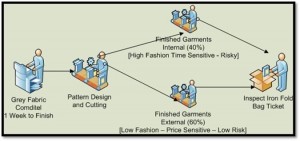
Arc’teryx is a Vancouver based company with a marketing strategy almost as outstanding as its products. The company produces high performance outdoor gear, competing with brands such as The North Face, Columbia, and Mountain Hardware. When building its products, Arc’teryx claims that: “Our sourcing team dedicates extensive research into staying informed and continually searches for the best materials available” (Arcteryx). The company’s process of creating new products is tied to the way in which it competes. Arc’teryx’s main purpose is to “build the finest products possible” (Arcteryx), the company doesn’t focus on outdoing the competition, but in creating innovation, which changes the perception of how outdoor performance products should be built.
Next, it is important to note Arc’teryx’s commitment in preserving the environment and being socially responsible. Even the durability of the company’s products is relevant to its environmental concerns, as this reduces the total amount of materials and energy used in manufacture and distribution over the years. As well, when manufacturing its products, Arc’teryx ensures that its down sources (for jacket insulation) are certified non-force fed and non-live pluck. In addition, the company offers a life time warranty and repair on its products, which satisfies customers while simultaneously keeping old jackets out of landfills. Moreover, any product that Arc’teryx can’t repair to meet customer standards is often donated to the less fortunate. All of these aspects work in tandem to offer customers with unique and higher value than its competitors offers.
Sources:




